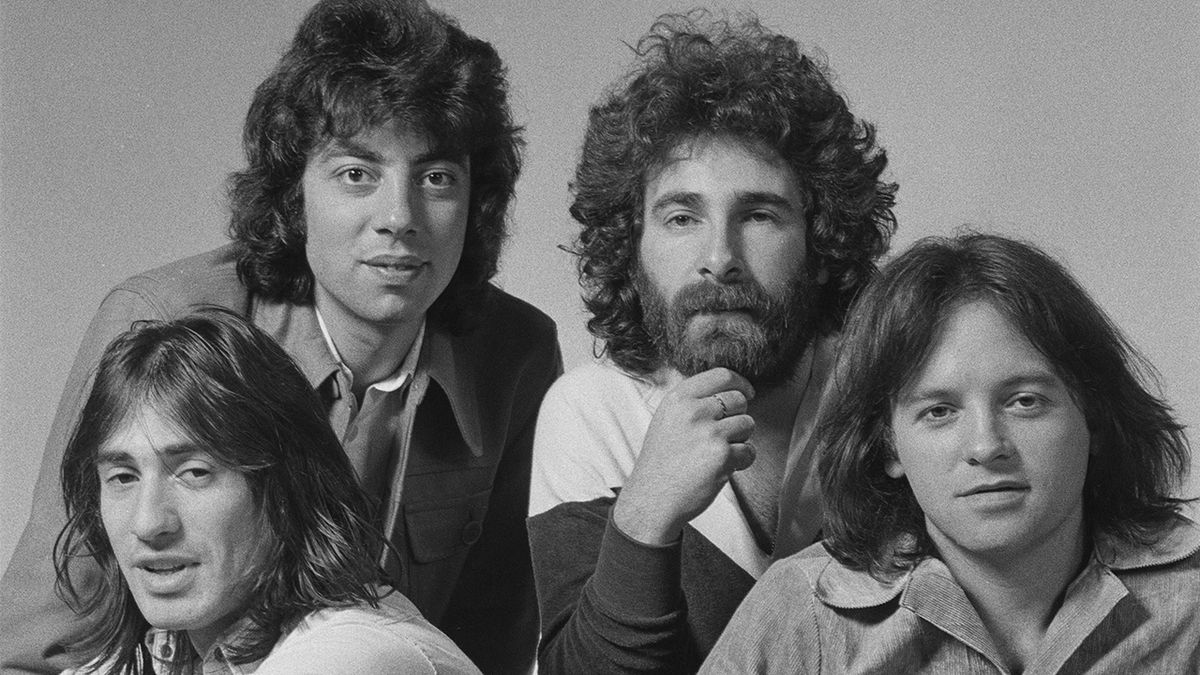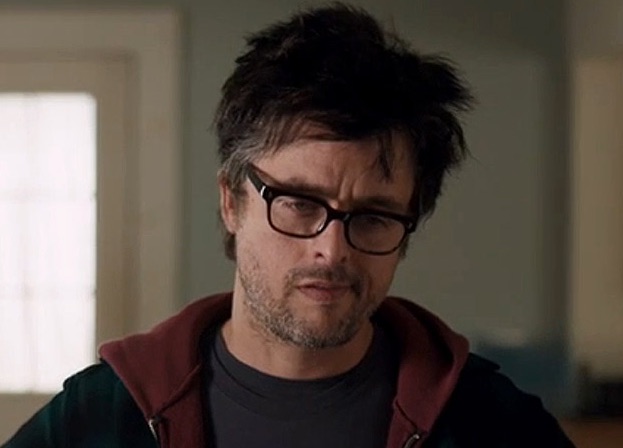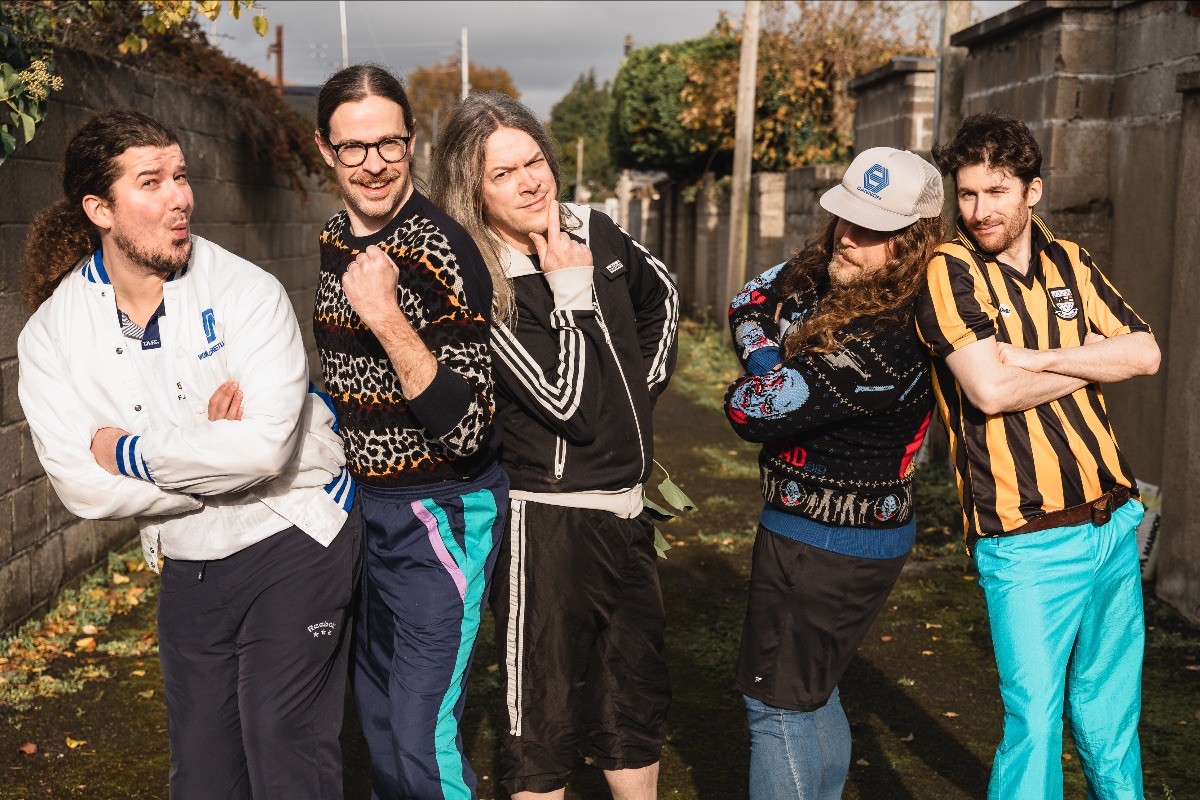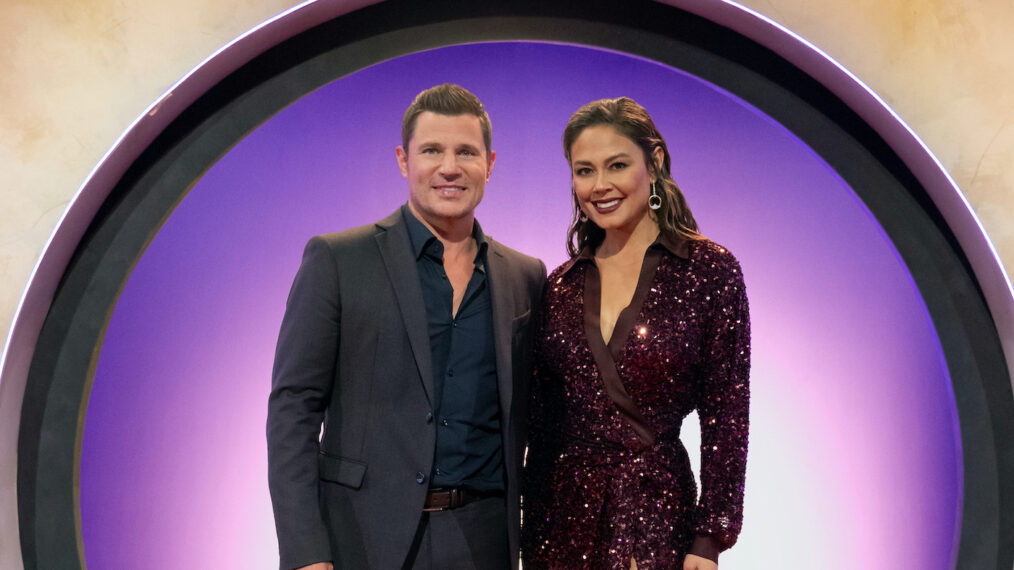
Fleeting as it was, Hugo Largo had its moment in the late 1980s. Fawned over by critics and fellow musicians alike, the New York City quartet was the product of a Lower East Side noise scene epitomized by bands like Sonic Youth. But Hugo Largo took it in a different direction, favoring moments of quiet, subtle buildups and an unpredictable pacing carved out by the angular poetry of lead singer Mimi Goese. There was also the group’s offbeat instrumentation, which featured two bass guitars and violin.
Hugo Largo issued two seminal releases over 24 months. The first, 1987’s Drum, was co-produced by Michael Stipe at John Keane’s storied studio in Athens, Ga. For 1989’s Mettle, the band divided its time between London and New York’s Dreamland Recording Studios. Both albums have been unavailable for decades—until now. The Huge Large And Electric: Hugo Largo 1984-1991 (Missing Piece) boxed set features Drum and Mettle, plus new material culled from live performances and unreleased recordings by the band’s best-known lineup of Goese, Adam Peacock, Hahn Rowe and Tim Sommer. The extras also include music from a revised version of Hugo Largo that cropped up in 1990 after Sommer moved on to work for Atlantic Records and MTV.
We got some insight from Goese and Sommer on the reissue project, reclaiming Hugo Largo’s latent legacy and the unexpected cool factor of Hootie & The Blowfish.
What was the impetus for this reissue project?
Goese: I think that we all had our own lives to live—but then my manager (David Whitehead) spent the past five years working to get the rights to the music back, without me knowing. Michael Krumper, who runs Missing Piece, was the one who signed us to Relativity Records in 1987. When you have such a tiny band that still needs to have its place, it’s great to have people who are warm and supportive. David Bryne used to stalk us. Brian Eno owned the label we were on. [Mettle was reissued on his Opal imprint for a time.] I ran into Devendra Banhart, who makes it sound like “Eskimo Song” is the best song ever. It’s funny, they’re in the crevasses. And it’s interesting to look back on it as something far away to marvel over … because I don’t remember it.
Sommer: None of this would’ve happened without the efforts of Mimi and her manager. And with Michael Krumper, it’s really a wonderful full-circle sort of thing. I’m a terrible archivist. I have virtually no pictures of Hugo Largo, so it’s amazing to see them all in one place. I also credit Hahn Rowe (who remixed Mettle) with doing such an extraordinary, patient and loving job of collating the whole thing on an audio level.
Listening to these two albums now, none of it sounds dated.
Goese: Hahn has actually made a point of saying he feels our music was timeless, instead of ahead of its time.
Sommer: When we were starting out, we’d go into a club without drums, and people assumed we were some kind of folk act. The idea that you could be making alternative electric music that was quiet was very, very alien in those days, especially in a live setting. We’d play the scuzziest clubs in America, and the minute we started playing, people would sit on the floor. I remember the reaction from Mimi: “You’re sitting on that floor?” But it would happen again and again. I’m so glad that we had the ability to transport people back then. What’s on record is very, very loyal to the noise we made live. It’s the same experience.
Goese: I came from the dance performance world, and to this day, I’m still not a trained singer. Listening to Hugo Largo now, I hear that I’m a dancer singing. It’s gymnastics. To overcompensate for what I thought was a band that might be perceived as lightweight, I was determined to hold on to people’s attention … in a way that was a little too desperate. But now I can hear a little bit more generosity. I wanted to invite people in.
Sommer: I was a very pretentious 22-year-old. I showed Mimi some architectural drawings from the Bauhaus days in 1920s Berlin. I told her, “This is what I want the band to sound like.” I pictured us being a lot more spoken word and arty. Mimi took it to a whole different place and made it into this beautiful, beautiful object.

What inspired the two-bass lineup?
Sommer: Personally, I think it was just convenience. When I met Mimi in 1983, I was just beginning to experiment with this idea of playing a bass into a boom box, then playing the boombox back and playing along with it. I really liked the sound it made. That’s where the idea came from—though I was aware that the Cure had used two basses on its best-ever song, “Primary.”
How did you guys link up with Micheal Stipe?
Sommer: I’d become friends with Michael very early on in his career. I met him in 1982, right around the time Chronic Town, R.E.M.’s first EP, was released. Hugo Largo made some early demos, and I slipped him a cassette. He flipped for it, and R.E.M. started using it as outro music at their shows in 1985. In the summer of 1986, Michael worked it out for us to go into the studio with him and John Keane in Athens, and we laid down the basics for what would become Drum. I think of him as a sort of concierge. He created an ideal environment for us to work in.
Goese: He was a big cheerleader for us. He was a connector, too. Everybody would always be hanging out at his house because he had a lot of information, and he was very generous with it.
Sommer: It was before cell phones and the internet, and it seemed like everyone interesting in the entire town of Athens didn’t have phones in their houses. Michael had a phone, but he told us he didn’t. We were all surprised when we heard it ring one day.
It’s interesting, to say the least, that a founding member of Hugo Largo went on to discover Hootie & The Blowfish.
Sommer: Hugo Largo played this club in Columbia, S.C., in 1987. It was packed, and we had a great show. I learned six years later that all the guys in Hootie & The Blowfish were there that night. When I met them in 1993, they were all huge college-rock freaks. I just went on and on with them talking about college radio, and the band—especially Darius Rucker—were the biggest R.E.M. fans. We bonded on that level. Somehow, they ended up selling over 25 million records. None of us involved in the Hootie project thought they were going to sell 50,000 copies, much less record one of the biggest-selling albums of all time.
—Hobart Rowland



























